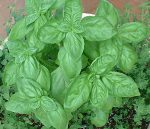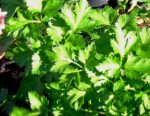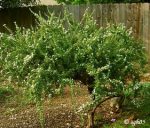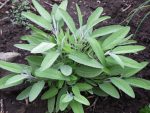You can open up some wonderful opportunities by growing Italian Herbs in an Italian herb garden. Some of the most famous and tastiest herbs in the world come from Italy. Some of the best cuisines come from Italy and are famous in part for their herbs.

Basil: One well known Italian herb is Basil and it is useful in many recipes. Not only will it add flavor to many menus it is also very useful to other plants in your garden. Planting Basil next to your peppers and tomatoes will actually improve their flavor. Plus, basil will also repel flies and mosquitoes.

Parsley: while slightly harder to grow will find it’s way into many Italian recipes as well as other types of cuisine. Many generations ago before their were breath mints it was found that eating fresh, raw parsley after a meal eradicated the bad breath left over from enjoying a flavorful cuisine. The tradition arose to serve parsley on a small dish after the meal. That is why today many of us use parsley as a garnish to our food.

Italian Oregano: Oregano is as decorative as it is flavorful. The mature plant will show little purple flowers. Remember that Oregano should not be freshly used until it has fully blossomed because this is when it is at it’s flavorsome best.

Fennel: The seeds enhance the zest of many a sauasage. The interesting thing about fennel is that the plant looses its flavor as it matures. To get the best out of this perennial, every few years it should be divided and replanted to enhance the taste.

Rosemary: Like basil, rosemary is an Italian herb that is beneficial to the garden. It sprouts little blue flowers and grows into a large shrub. It helps the garden by attracting bees. Although it is a tough evergreen perennial, it is sensitive to frost.

Garlic: Probably the most used herb in Italian cuisines is garlic. An Italian herb garden would simply be incomplete without this useful herb. Garlic cloves can be planted and will thrive in just about any garden with very little attention. They can be easily stored in the freezer or refrigerator once harvested and used at will.

Sage: Another herb used in Italian dishes from salads and meats is Sage. New shoots of the plant contain the most flavor so it is recommended not to let sage plants to get to woody by keeping them trim. Therefore, new shoots will be encouraged to grow. Harvest Sage after it has bloomed.
Although there are so many more herbs that can be included in an Italian herb garden, you really should consider which herbs you will use. Think about the growing conditions each plant needs and consider whether or not you can provide them. Yes, Italian herbs add flavor to food but they should also be looked at as more then that. They also make amazing additions to landscape designs. They can be displayed for color and their aroma.
Plant them among other plants and think of them as bringing you the sights and aromas straight from Italy itself. It will be like wandering through the Italian countryside.
Guest Post Submitted by Darcy.
